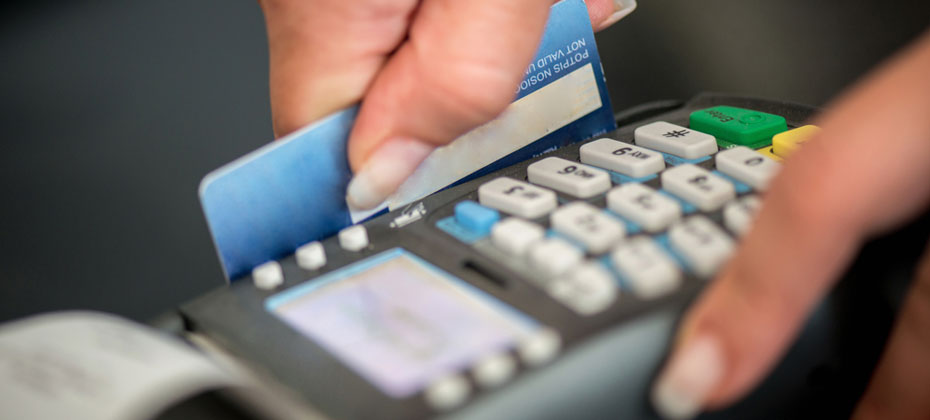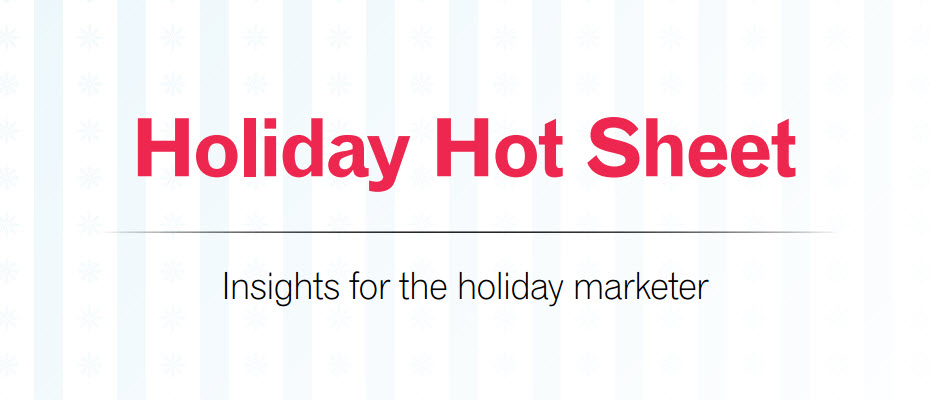All posts by Guest Contributor

Looking at true fraud rate I’ve talked with many companies over the years about their fraud problems. Most have a genuine desire to operate under the fraud prevention model and eliminate all possible fraud from their systems. The impact on profit is often the primary motivation for implementing solutions, but in reality most companies employ a fraud management schema, offsetting the cost of fraud with the cost of managing it. There are numerous write-ups and studies on the true cost of fraud. What most people don’t realize is that, for each item lost to fraud, a business operating on 10 percent net profit margins will need to sell 10 times the amount of product in order to recover the expense associated with the loss. These hard costs don’t include the soft dollar costs, such as increased call center expenses to handle customer calls. Recently, some organizations have started to add reputational risk into their cost-of-fraud equation. With the proliferation of social media, a few unhappy customers who have been victims of fraud easily can impact an organization’s reputation. This is an emerging fuzzy cost that eventually can be tied back to lost revenue or a drop in share price. Most companies say with pride that their acceptable fraud rate is zero. But when it comes time to choose a partner in fraud detection, it almost always comes down to return on investment. How much fraud can be stopped — and at what price? More informed organizations take all operational expenses and metrics into consideration, but many look at vendor price as the only cost. It’s at this point that they start to increase their acceptable fraud rate. In other words, if — hypothetically — Vendor A can stop only 80 percent of the fraud compared with Vendor B, but Vendor A costs less than 80 percent of what Vendor B costs, they’ll choose Vendor A. All of a sudden, their acceptable fraud rate is no longer zero. This method of decision making is like saying we’ll turn off the security cameras for 20 percent of the day because we can save money on electricity. On the surface, I understand. You have to be accountable to the shareholders. You have to spend and invest responsibly. Everyone is under pressure to perform financially. How many executives, however, take the time to see where those lost dollars end up? If they knew where the money went, would they change their view? We must be vigilant and keep our acceptable fraud rate at zero.

Consumer credit card debt reached $650 billion in Q3 2015 — the highest level since Q4 2009.

As 2016 approaches, many people have identified their New Year’s resolutions, but the majority fail to stick to these resolutions. While 45% of people make resolutions, only 8% are successful in achieving their goals. The most common resolution types:* To increase the likelihood of keeping resolutions, experts recommend setting small, attainable goals and regularly tracking progress. *Total is higher than 100% because of multiple resolutions >> New Year's Resolution Statistics

According to PlayNetwork.com, for the first time in two decades Mariah Carey’s “All I Want For Christmas Is You” is no longer the most-played holiday song in retail stores. The list of top songs includes: Rank Artist Title 1 The Shins Wonderful Christmastime 2 Mariah Carey All I Want For Christmas Is You 3 Christina Aguilera Christmas Time 4 Waitresses Christmas Wrapping 5 Jack Johnson Someday At Christmas 6 Kelly Clarkson Underneath the Tree 7 Michael Buble A Holly Jolly Christmas 8 Bing Crosby White Chistmas 9 Train What Christmas Means To Me 10 Ella Fitzgerald Have Yourself A Merry Little Christmas >> Top 20 Songs Heard by Holiday Shoppers

Millennials, now the largest generation in the United States, are taking longer to establish credit than earlier generations of young people.

Experian data shows consumers are more confident managing their credit since the recession. The Q3 2015 Experian Market Intelligence Brief was released today featuring data that highlights consumer credit card debt has now reached its highest level since Q4 2009. Credit card debt levels reached $650 billion in Q3 2015, the highest it has been since Q4 2009 when it was $667 billion. Credit card delinquency rates on outstanding balances 60 or more days past due have decreased 71 percent during the same time period. Combining those indicators with the national unemployment rate dropping 50 percent during the same span illustrates a positive economic outlook on credit card trends among lenders and consumers. “Overall credit card limits have increased 102 percent since Q4 2009 with $82 billion originated in Q3 2015,” said Kelly Kent, vice president of Experian Decision Analytics. “The increase in limits from lenders and the steady climb in credit card debt combined with exceptional delinquency rates signals greater confidence among consumers as they are showing more assurance in managing their credit since the recession. We expect to see credit card debt increase in Q4 based on historical seasonal trends driven by the holiday shopping season especially with the early positive holiday sales as a sign.” The Q3 2015 Experian Market Intelligence Brief report is now available.

According to the latest Experian State of the Automotive Finance Market report, leases accounted for nearly 27% of all new vehicle transactions in Q3 2015, up from 24.7% the previous year and the highest percentage on record.

Customer Experience during the holiday shopping season During the holidays, consumers transact at a much greater rate than any other time of the year. Many risk-management departments respond by loosening the reins on their decision engines to improve the customer experience — and to ensure that this spike does not trigger a response that would impede a holiday shopper’s desire to grab one more stocking stuffer or a gift for a last-minute guest. As a result, it also is the busy season for fraudsters, and they use this act of goodwill toward your customers to improve their criminal enterprise. Ultimately, you are tasked with providing a great customer experience to your real customers while eliminating any synthetic ones. Recent data breaches resulted in large quantities of personally identifiable information that thieves can use to create synthetic identities being published on the Dark Web. As this data is related to real consumers, it can be difficult for your identity-authentication solution to determine that these identities have been compromised or fabricated, enabling fraudsters to open accounts with your organization. Experian’s Identity Element Network™ can help you determine when synthetic identities are at work within your business. It evaluates nearly 300 data-element combinations to determine if certain elements appear in cyberspace frequently or are being used in combination with data not consistent with your customer’s identity. This proven resource helps you manage fraud across the Customer Life Cycle and hinder the damage that identity thieves cause. Identity Element Network examines a vast attribute repository that grows by more than 2 million transactions each day, revealing up-to-date fraud threats associated with inconsistent or high-risk use of personal identity elements. Our goal is to provide the comfort of knowing that you are transacting with your real customers. Don’t get left in the cold this holiday season — fraudsters are looking for opportunities to take advantage of you and your customers. Contact your Experian account executive to learn how Identity Element Network can help make sure you are not letting fraudsters exploit the customer experience intended for your real customers. Learn more about the delicate balance between customer and criminal by viewing our fraud e-book.

Electronic signatures and their emerging presence in our Internet-connected world I had the opportunity to represent Experian at the eSignRecords 2015 conference in New York City last week. The concept of electronic signature, while not new, certainly has an emerging presence in the Internet-connected world — as evidenced by the various attendee companies that were represented, everything from home mortgages to automobiles. Much of the discussion focused on the legal aspects of accepting an electronic signature in lieu of an in-person physical signature. The implications of accepting this virtual stamp of approval were discussed, as well as the various cases that already have been tried in court. Of course, the outcome of those cases shapes the future of how to properly integrate this new form of authorization into existing business processes. Attendees discussed the basic concept of simply accepting a signature on an electronic pad as opposed to one written on a piece of paper. That act alone has many legal challenges even though it provides the luxury of in-person authentication through a face-to-face meeting. The complexities and risk increase exponentially when these services are extended over the Internet. The ability to sign documents virtually opens up a whole new world of business opportunities, and the concept certainly caters to the consumer’s need for convenience. However, the anonymity of the Internet presents the everyday challenge of balancing consumer expectations of greater ease of use with necessary fraud prevention measures. Ultimately, it always comes back to understanding who is actually signing that document. All of this highlights the need for robust authentication and security measures. As more and more legal documents and contracts are passed around virtually, the opportunity to properly screen and verify who has access to the documents gets more critical. Many organizations still rely on the tried-and-true method of knowledge-based authentication (KBA), while many others have called for its end. KBA continues to soldier on as an effective way to ensure that people on the other end of the wire are who they say they are by asking questions that — presumably — only they know the answers to. In most cases, KBA is viewed as a “check the box” step in the process to satisfy the lawyers. In certain cases, that’s all you need to do to ensure compliance with legal policy or regulatory requirements. It starts to get tricky is when there’s more on the line than just “check the box” actions. When the liability of first- or third-party fraud, becomes greater than simple compliance, it’s time to implement tighter security, while at the same time limiting the amount of friction caused by the process. Many in attendance discussed the need for layers of authentication based on the type of documents that are being processed and handled. This speaks directly to the point that one size does not fit all. As the industry matures and acceptance of e-signatures increases, so too does the need for more robust, flexible options in authentication. Another topic — that was quite frankly foreign to everyone we talked to — was the need for security around the concept of account takeover. When discussing this type of fraud, most attendees did not even consider this to be a hole in their strategy. Consider this fictional scenario. I’m responsible for mergers and acquisitions for my publicly traded company. I often share confidential information via electronic means, leveraging one of the many electronic signature solutions on the market. I become a victim of a phishing attack and unknowingly provide my login credentials to the fraudster. The fraudster now has access to every electronic document that I have shared with various organizations — most of which have been targets for mergers and acquisitions. Fraudsters are creative. They exploit new technologies — not because they’re trendsetters, but because oftentimes these new technologies fail to consider how fraudsters can benefit from the system. If you are considering adopting e-signature as a formal process, please consider implementing: Flexible levels of authentication based on the risk and liability of the documents that are being presented and what they are protecting FraudNet for Account Takeover, which enhances security around access to these critical documents to protect against data breaches Not only the needs and experiences of your own business, but customer needs as well to enable to the best possible customer interactions If you haven’t considered implementing e-signature technology into your business process, you should — but be sure to have your fraud team present when considering the implementation.

Experian® recently released the 2015 State of Credit report, which analyzes key credit metrics across the nation.

With Black Friday quickly approaching, a recent Experian study shows online Black Friday searches are already tracking ahead of last year. This October, the weekly search share for Black Friday averaged 12% higher than October 2014 and is expected to increase dramatically between now and Thanksgiving week. Top product searches for the week ending October 31, 2015 include: Marketers can design more successful campaigns and maximize rewards for both consumers and brands by staying on top of the latest search trends. >> Holiday Hot Sheet

Understanding the Impact of New Marketplace Lending Regulations The online marketplace lending sector has enjoyed unprecedented growth these past few years. According to a recent Morgan Stanley research report, the volume of loans extended by online marketplace lenders in the United States has doubled every year since 2010, hitting $12 billion last year. Some analysts speculate this growth will continue at a compound annual rate of 47 percent through 2020. The market’s growth, coupled with new, disruptive lending models, is now prompting regulators in Washington to raise questions about the potential opportunities and challenges for consumers, small businesses, and the safety and soundness of our financial system. Last July, the Treasury Department issued a request for information to better understand the benefits and risks associated with new online lending platforms and other “fin-tech” startups. The Treasury’s RFI sought information about how these entities’ business models differ from traditional lenders, their impact on financially underserved consumers, and ultimately whether the regulatory framework should evolve to ensure the safe growth of this emerging marketplace. They were also interested in how online lenders were assessing credit risk of borrowers. Most comments the Treasury Department received from online lenders focused on the positive impact that innovation in financial services could have on consumers and small businesses. For example, in an open letter to the Treasury, Lending Club Founder and CEO Renaud Laplanche stated his company’s role in “bringing more transparency, removing friction, reducing systemic risk by requiring a match between assets and liabilities, and offering traditional banks … the opportunity to participate on our platform and benefit from the same cost reductions from which our other borrowers and investors benefit.” Laplanche emphasized the benefits to consumers by noting that “over 70 percent of borrowers on our platform report using their loan to pay off an existing loan or credit card balance and report that the interest rate on their Lending Club loan was an average of seven percentage points lower than they were paying on their outstanding debt or credit cards.” For small businesses, Laplanche explained how commercial loans less than $250,000 tend to be underserved by traditional lenders. “Bank loans from $100k to $250k have fallen 22 percent since 2007, during a period when bank loans of $1 million or greater increased by 56 percent,” he wrote. “Our platform’s automated processes allow us to provide smaller commercial loans that are less available more economically than traditional banks can.” Meanwhile, some commenters called for regulators to increase oversight of the marketplace to provide more certainty. In a joint comment letter, the American Bankers Association and Consumer Bankers Association argued that all lenders — regardless of medium by which they deliver loans — should operate under the same rules and standards. They highlighted the numerous consumer protections in place to protect borrowers — from transparency in pricing, to fair debt collection methods, and data protection — and advocate for these protections to apply in all bank-like activities involving lending or servicing. But what about the Consumer Financial Protection Bureau (CFPB)? The CFPB will take a leadership role to ensure marketplace lenders comply with the fair lending and consumer financial protection laws that the CFPB has authority to enforce. The CFPB has not made any direct notice to the online lending marketplace specifically, but it did issue a notice in October 2014 saying it had no intention of bringing enforcement actions against companies that offer innovative financial products — so long as they benefit consumers. Meanwhile, it is also likely the Federal Trade Commission and state attorneys general will increase their focus on the online lending segment, especially as it relates to how products and services are marketed. The FTC held a symposium on Oct. 30 to examine online lead generation and consumer protection in the lending and education industries. The FTC workshop raised questions about the potential consumer protection challenges of this advertising medium used heavily by online lenders. In particular, there were calls for greater transparency in the use of lead generation, including more information on the ways consumer data is collected through lead-gen websites and how it is used and shared. Online marketplace lenders should expect to stay under the regulatory spotlight – because that’s what success often brings. The sector can avoid undue burdens by ensuring compliance with existing laws and adopting and following industry best practices. For more information, visit www.experian.com/marketplacelending.

According to a recent survey commissioned by VantageScore® Solutions, millennials cite being unscoreable as the main obstacle to credit access. Among the findings: One-third of millennials cannot obtain the credit they need Of those unable to obtain credit, 34% attribute it to lack of a credit score 49% of millennials agree that competition in the credit-scoring marketplace is beneficial Lenders can help this segment and open the gateway of credit by using advanced risk models that can accurately score consumers considered unscoreable by conventional risk models. >> Infographic: The Giant Credit Gap VantageScore® is a registered trademark of VantageScore Solutions, LLC.

The Responsible Business Lending Coalition, a group of nonbank small-business lenders, recently announced a regulatory program designed to bring greater clarity to the industry’s pricing and consumer protections, including: The right to transparent pricing and terms The right to non-abusive products The right to responsible underwriting The right to fair treatment from brokers The right to inclusive credit access The right to fair collection practices Industry self-regulation is a good way for market leaders to demonstrate self-discipline and is preferable to legislative or regulatory changes because of its flexibility and ability to accommodate evolving market trends. >> Webinar: Online Marketplace Lending

While walking through a toy store in search of the perfect gift for a nephew, I noticed the board game Risk, which touts itself as “The Game of Global Domination.” For those who are unaware, the game usually is won by players who focus on four key themes: Strategy — Before you begin the game, you need a strategy to attack new territories while defending your own Attack — While you have the option to sit back and defend your territory, it’s better to attack a weakened opponent Fortify — When you are finished attacking, it’s often best to fortify your position Alliances — While not an official part of the game, creating partnerships is necessary in order to win These themes also are relevant to the world of real-life fraud risk prevention. The difference is that the stakes are real and much higher. Let’s look at how these themes play out in real-life fraud risk prevention: Strategy — Like in the game, you need a strategy for fraud risk detection and prevention. That strategy must be flexible and adaptable since fraudsters (your enemies) also continuously adapt to changing environments, usually at a much quicker, less bureaucratic pace. For example, your competitors (other countries) may improve their defenses, so fraudsters will mount a more focused attack on you. Fraudsters also may build alliances to attack you from different vectors or channels, resulting in a more sophisticated, comprehensive strike. Attack — As the game begins, all players have access to all competitors (countries). This means that fraudsters might have the upper hand in a certain area of the business. You can sit back and try to defend the territory you already “own,” where fraudsters have no traction, but it’s best to be aggressive and attack fraudsters by expanding your coverage across all channels. For example, you might have plenty of controls in place to manage your Web orders (occupied territory), but your call center operations (opponents’ territory) aren’t protected, i.e., the fraudsters “own” this space. You need to attack that channel to drive fraudsters out. Fortify — In the game, you can fortify your position after a successful move — that is, move more troops to your newly conquered territories. In real life, you always have the option to fortify your position, and you should constantly look for ways to improve your controls. You can’t afford to maintain on your current position, because fraudsters constantly are looking for weaknesses. Alliances — In business, we often are hesitant to share information with our competitors. Fraudsters use this to their advantage. Just as fraudsters act in a coordinated fashion, so must we. Use all available resources and partners to shore up your defenses Leverage the power of consortium data Learn new methods from traditional competitors Always team up with internal and external partners to defend your territory If you apply these themes, you will be positioned for global domination in the fight against fraud risk. You can read more about fraud-prevention strategies in our recent ebook, Protecting the Customer Experience. As a side note, I’m always ready for a game of Risk, so contact me if you’re interested. But be forewarned — I’m competitive.